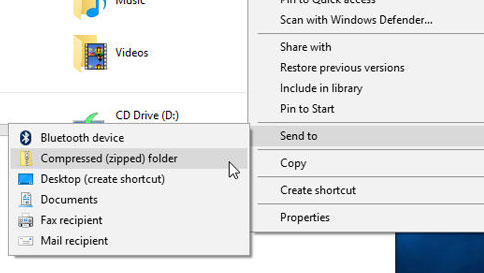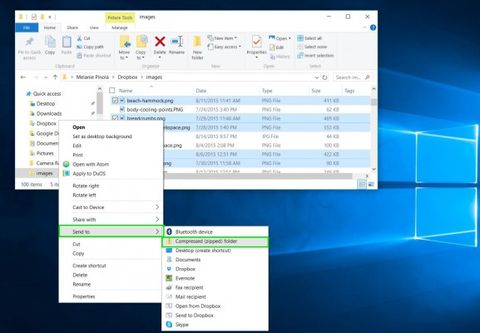
- #Zip folder command line how to#
- #Zip folder command line zip file#
- #Zip folder command line update#
- #Zip folder command line archive#
#Zip folder command line update#
*.doc: only update the doc files SwitchesĪnother command that we see on the command line is the switch.
#Zip folder command line archive#
Using the command on the terminal looks like this:Įxample.zip: the archive you want to update files in This command will not work with solid archives. This command prevents needing to decompress and recompress the entire archive. This function letter u command is used to replace old files in your archive with newer files. r: recurse all the child directories Update *.doc: test all the doc files in the archive Using the command on the terminal looks like this: However, this is much less useful than the “-t” switch. This function letter t command is used to test the integrity of archives. However, you may not need to use this command it often. This function letter lowercase L command is used to list the archive contents. In this command, we see the following words/commands:Įxample.zip: the archive where you want to extract all the files from List

This is useful if you have an elaborate or important directory structure. The difference is it preserves the full paths. Meanwhile, the function letter x command works the same way with e. In this command, we see the following words/commands:Įxample.zip: the source archive you are expanding Using the command will look like this on the terminal line:Īgain, let’s break it down to help you understand.

The “e” command stands for extract to unzip or enlarge and archive. The function letter e command is useful when there is no substantial archive. r: traverse all subdirectories Extract and Enlarge Let’s break down the command so you won’t get confused. Using the command will look like this on the terminal line: The function letter d command is used for removing a particular file or files from an archive. Using the command will look like this on the terminal line:ħ-Zip (A) 4.60 beta Copyright (c) 1999-2008 Igor Pavlov

This “a” command stands for “archive” or “add.” To do this successfully, you must specify the archive location and the source files. The function letter a command is used to put data in the archives.
#Zip folder command line how to#
Because the command line is useless if you don’t know how to fix 7-Zip cannot open file. Because they are only single letters, they are quite easy to memorize.Īside from looking for the details about 7-Zip download for PC or for Linux, it is important to have idea about archive error. In this section, we’re going walk you through function letter commands. You might be interested in our 7-Zip vs WinRAR review and our 7-Zip password protect guide.
#Zip folder command line zip file#
Zmore and Zless command works perfectly for a ZIP file however, these do not work for a ZIP folder that contains the multiple files.Before we proceed with our examples, check out other guides, and reviews on our website. Similar to more and less command in Linux, these commands can be used to view the contents of a file from the command line without extracting. Viewing the contents of ZIP archive Using zmore and zless Please note that we have explained the procedure and commands described in this article on a Debian 10 system. In this article, we will see some of the Linux commands that will help us to view the contents of an archive without the need to extract them. There are some commands in Linux that allows you to quickly view the contents of an archive without extracting it. However, if you are dealing with the archive containing a large number of files or the files with big size, then it will become a time-consuming and annoying task. To view and access the contents of those archives, you have to extract them in a directory, which seems a pretty easy task.

You most probably have used compression and archiving techniques for backup or for saving space on your hard disk.


 0 kommentar(er)
0 kommentar(er)
